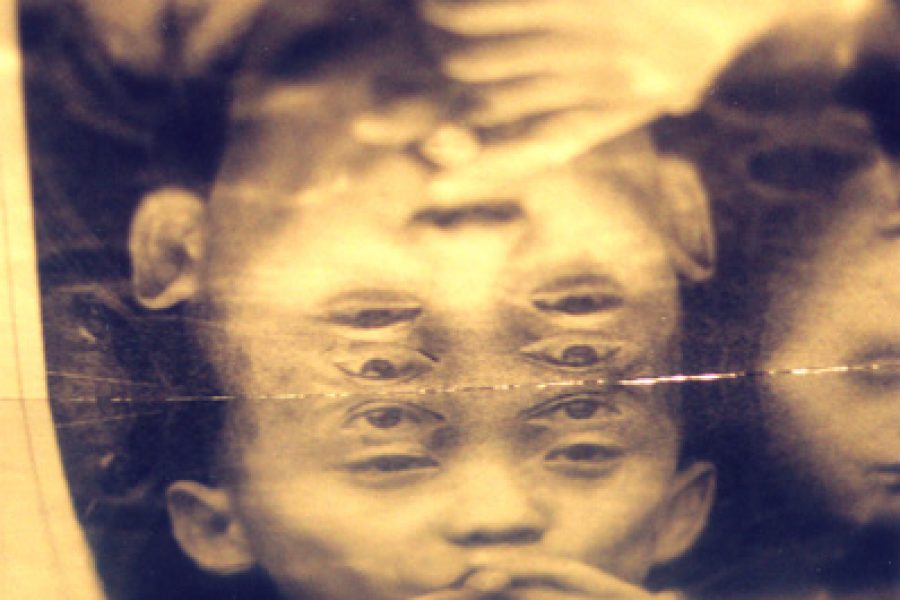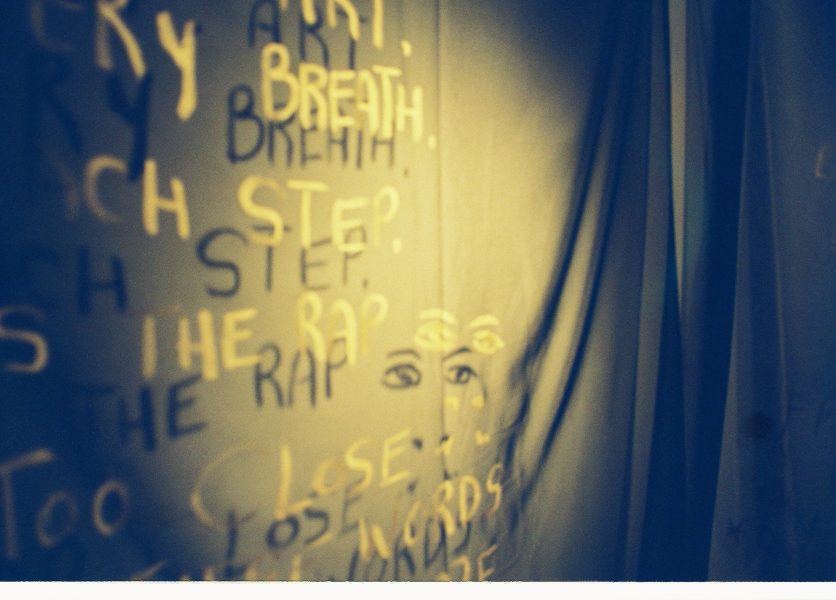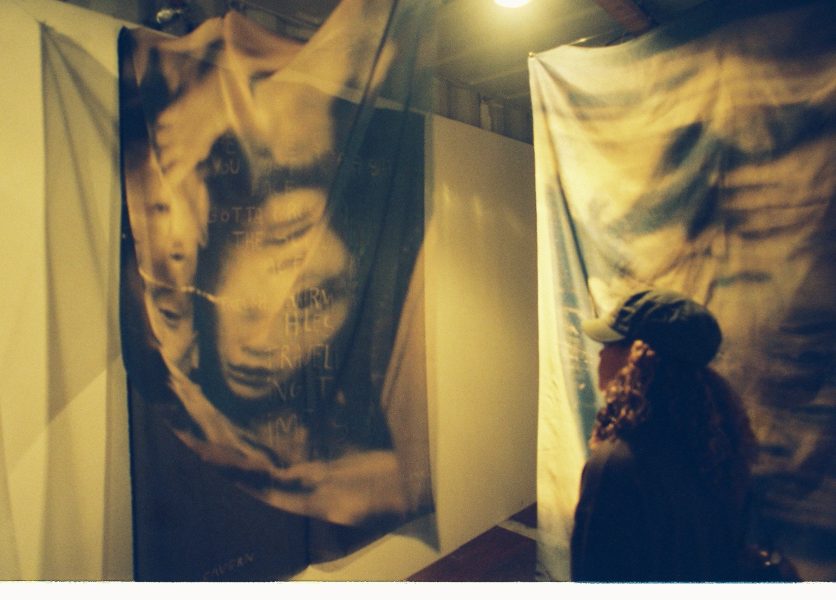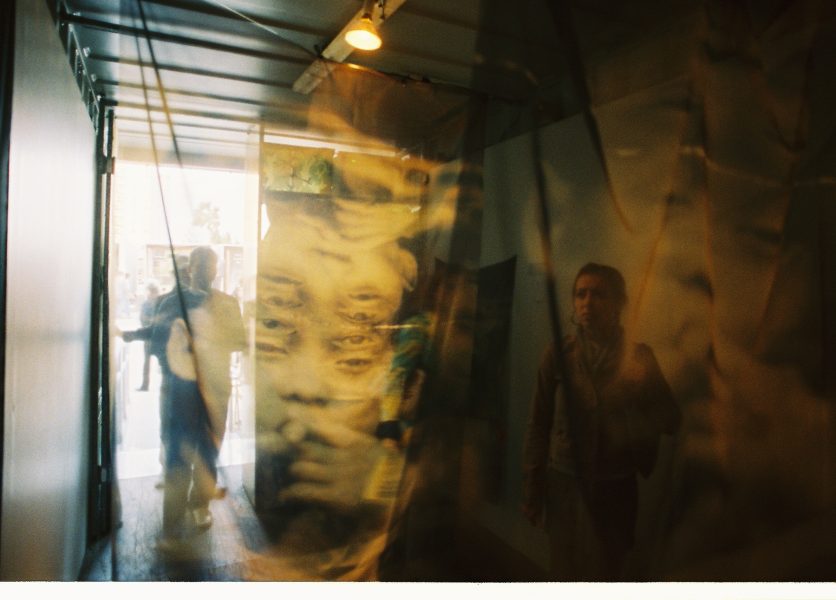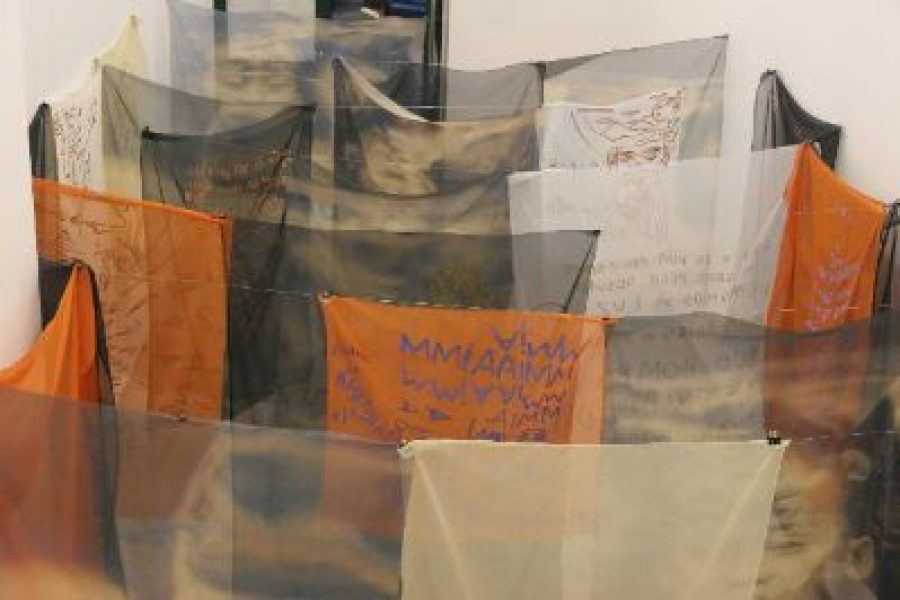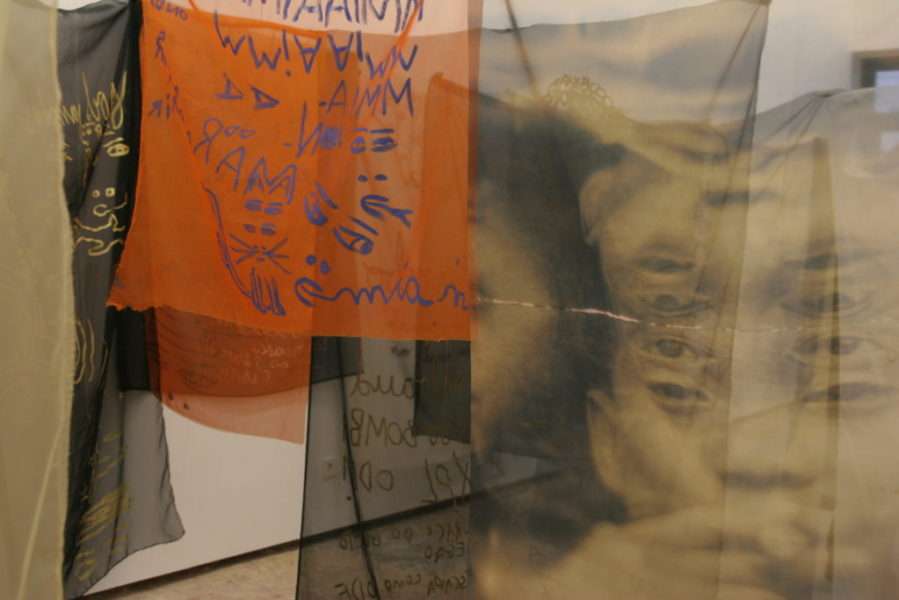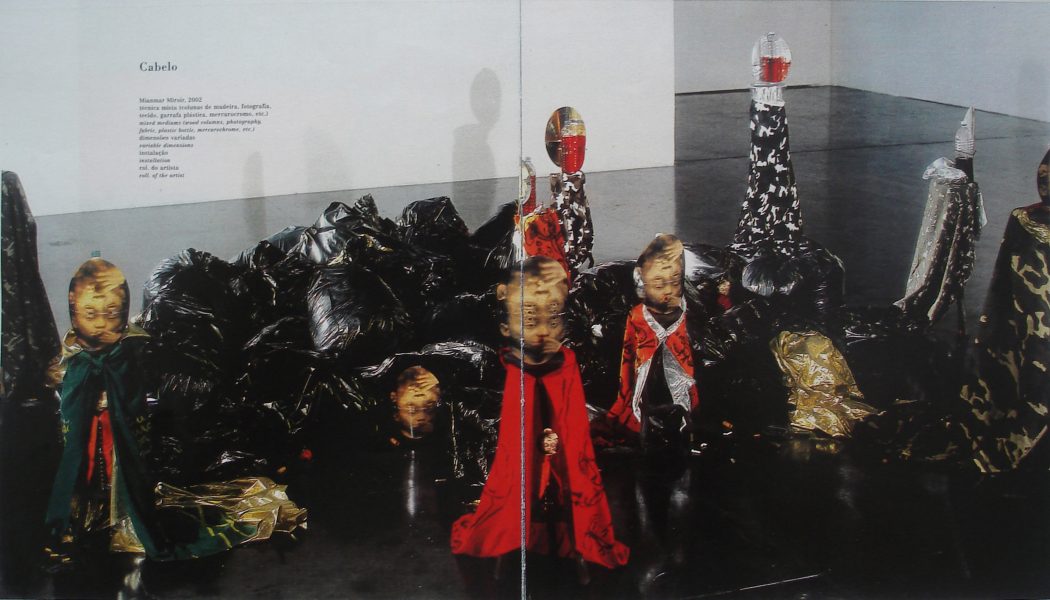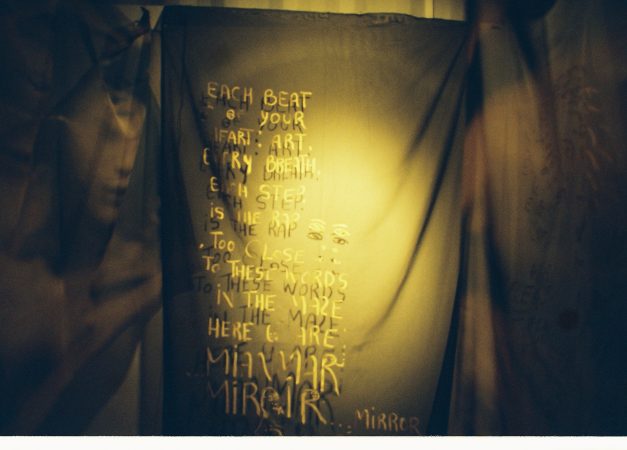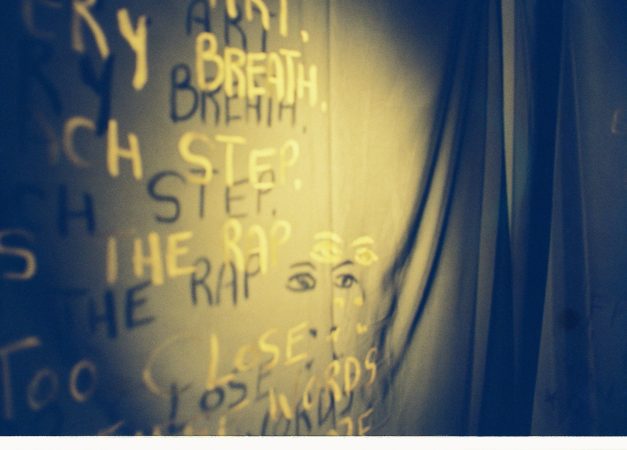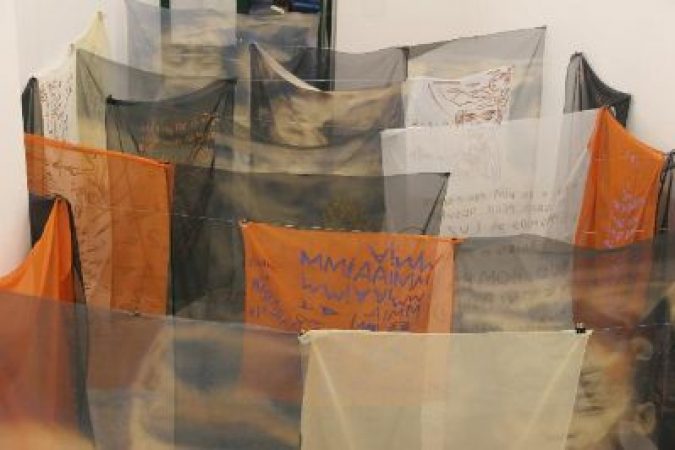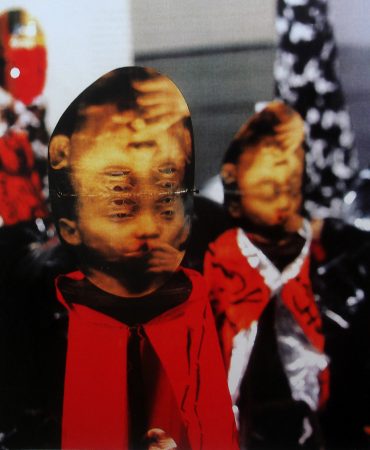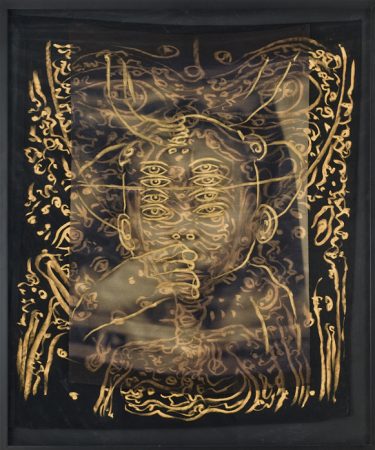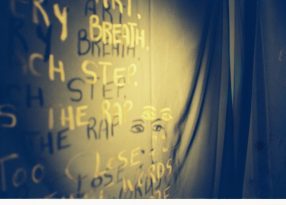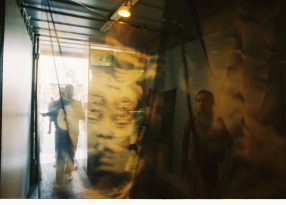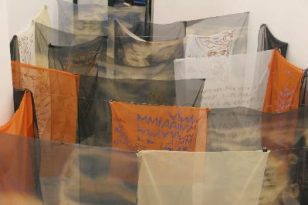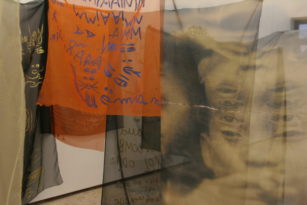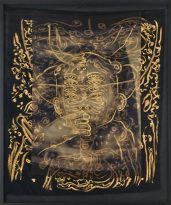Mianmar Miroir
Art POSITIONS | art Basel miami (2006)
3+1 arte contemporânea (2007)
Museu de arte moderna – MAM (2002)
Miami, USA
Lisbon, Portugal
Rio de Janeiro, Brazil
Mianmar Miroir (The Corridor)
Fernando Oliva
2006
Cabelo is a Brazilian artist who has shown at the Documenta X, in Kassel (1997) and at the 26th São Paulo International Biennial (2004). For the ART POSITIONS, ART BASEL MIAMI BEACH 2006 he has developed a novel creation: an installation in which space is taken up with photo prints, drawings on fabric, and video images. For this work, the artist drew inspiration from his well-known series Mianmar Miroir.
» Read more
In Cabelo’s installation, photographs and drawings are mounted on rods along their upper edges and then hung from clotheslines. As result of their flexible and adaptable character, these banner-like surfaces enable a specific encounter with space while reaffirming transparency and favoring a dialogue with viewers who can either observe the work from the distance or traverse it, thus coming into direct body contact with the images. In this sense, the way in which color presents itself in space, and the manner in which an installed maze-like situation invites the viewer’s gaze and body to take part in it and to drift clearly show that Helio Oiticica was most influential in Cabelo’s work, particularly his series Penetráveis [Penetrables] and Parangolés.
The starting point for Mianmar Miroir was a photograph of Burmese twins Johnny and Luther Htoo, who were seen as having spiritual powers and at age 12 became known worldwide for leading the Christian guerilla group God’s Army that struggled against the junta army in Burma (now renamed Myanmar). On viewing the impressive photo of the twins (Johnny’s angelical and feminine appearance contrasting with cigar-smoking Luther’s adult looks and shaved head), Cabelo obsessed over the creative possibilities he spotted on the image; consequently, he adopted in his work not only the twins’s photo, but also some of its meanings, as for example the question of the double, the mirroring, resistance, and messianism.
The constructive handling of language, which is another structural element in Cabelo’s work, also attends this installation by means of short verses and phrases scattered on the image surfaces, mixed with the figures of “smoking Buddhas” and devilish “forest beings”. In this sense, Cabelo’s practical experience as musician and poet is fundamental. “First of all, I don’t belong to myself. I am a horse of the world. Poetry’s instrument,” he wrote. “I am much more ‘what’ than ‘who’.”
A corridor. Pieces of fabric hanging from clotheslines build up a sort of maze. The passing viewer comes face to face with photographs printed on transparent fabric that offer them a glimpse of what is to come: drawings, words, and videos (in which the artist, wearing cape and mask, plays a part in a cave and among trees in a forest). Sounds, noises, scattered words, and echoes account for the environmental sound.
On the back wall at the end of the maze pathway, the video images projected on the back wall blend in with the cast shadows of photos printed on transparent fabric, blowing and flapping in the wind as they perform movements of inhalation and exhalation. In the video projection, a light coming from a room suggests an extension of the corridor.
* Brazilian artist Rodrigo Saad (known as Cabelo, which translates literally as “hair” in Portuguese) has shown his work at Documenta X, in Kassel (1997), at the 26th São Paulo International Biennial (2004), and at Rencontres Parallèles (2005) held at the Centre d’Art Contemporain de Basse-Normandie, in France. Cabelo lives and works in Rio de Janeiro. He belongs in the same generation of artists that emerged in the 1990s and that include Rivane Neuenschwander, Sandra Cinto, Marepe and José Damasceno, among others.
» Hide text
